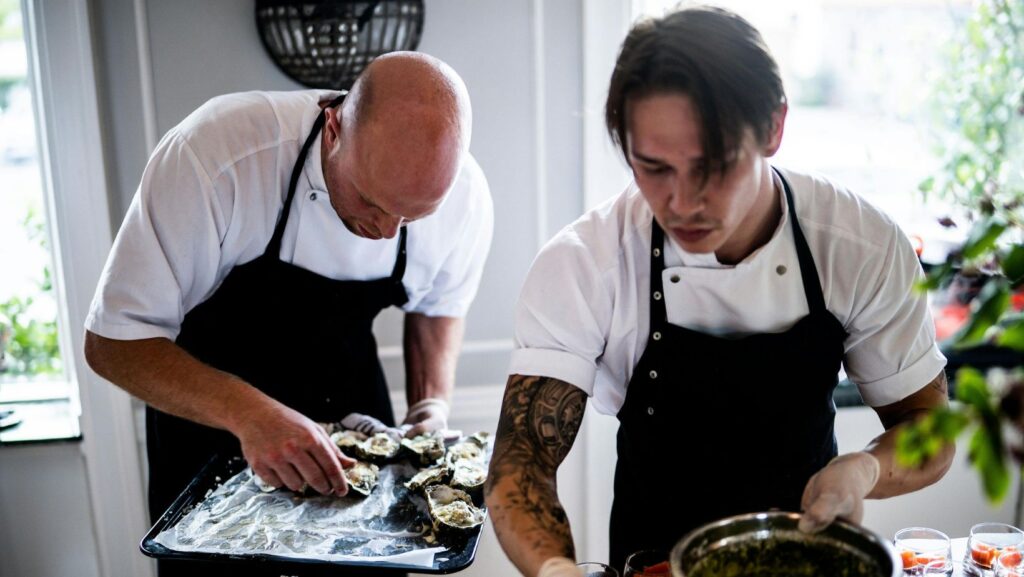Table of Contents
Introduction
Creating delicious and flavorsome dishes is an art that skilled chefs master through a combination of techniques, creativity, and the use of secret ingredients. Behind every mouth-watering dish lies a carefully curated selection of ingredients that elevate the flavors to new heights. Through this blog post, we delve into the world of secret ingredients – specifically, the role of wine and gourmet olive oil and how to cleverly pair them for maximum flavor impact.
The Role of Wine in Flavorful Dishes
Wine is a versatile ingredient that adds depth, complexity, and richness to various dishes. When utilized thoughtfully, wine can transform a meal from ordinary to extraordinary. For chefs looking to enhance their culinary creations, tapping into the diversity of flavors that wine offers is essential. Subscribing to a wine subscription service can provide access to a curated selection of wines tailored to complement different cuisines.
Roles of Wine in Flavorful Dishes:
- Marinades: Wine works wonders as a key ingredient in marinades, tenderizing meats and infusing them with flavor.
- Sauces: It serves as a base for sauces, adding acidity and depth to dishes.
- Deglazing: Wine is excellent for deglazing pans to capture the flavorful bits stuck to the bottom during cooking.
- Poaching: It can be used for poaching ingredients like fish or fruit, imparting a delicate flavor.
- Pairing: Wine pairing enhances the dining experience by complementing the flavors of the dish.
Varieties of Wine and Their Uses
The variety of wine used in a dish can significantly impact its flavor profile. Different types of wines, from robust reds to crisp whites, lend themselves well to specific culinary applications. Understanding the characteristics of each wine variety is crucial for chefs aiming to create harmonious flavor pairings.
Varieties of Wine and Their Uses:
- Chardonnay: Creamy texture and citrus notes make it ideal for cream-based sauces and seafood dishes.
- Merlot: With its soft tannins and plum undertones, it pairs well with red meat dishes.
- Sauvignon Blanc: Known for its herbal and grassy notes, it complements dishes with fresh herbs or green vegetables.
- Pinot Noir: Light-bodied and fruity, making it perfect for chicken and mushroom dishes.
- Cabernet Sauvignon: Bold and rich, it matches well with hearty dishes like steaks and stews.
Gourmet Olive Oil and its Culinary Applications
Gourmet olive oil is a staple in the kitchen, revered for its robust flavor and versatility. When used judiciously, this olive oil can elevate the taste profile of dishes, adding a luxurious touch.

Chefs who appreciate the nuances of high-quality olive oil have a secret weapon in their culinary arsenal.
Gourmet Olive Oil and its Culinary Applications:
- Drizzling: A finishing touch of gourmet olive oil enhances the flavors of salads, soups, and grilled vegetables.
- Sauteing: Using gourmet olive oil for sauteing imparts a rich flavor to vegetables, meats, and seafood.
- Dipping: Serve gourmet olive oil alongside bread for a simple yet indulgent appetizer.
- Dressing: Create flavorful dressings for salads by combining gourmet olive oil with vinegar or citrus juice.
- Baking: Gourmet olive oil can be used to add moisture and a subtle fruity note to cakes and bread.
Pairing Wine and Olive Oil for Maximum Flavor
When it comes to creating dishes bursting with flavor, the art of pairing wine and olive oil is a game-changer. The synergy between these two secret ingredients can unlock a depth of taste that enhances the overall dining experience. By understanding how to pair wine and olive oil effectively, chefs can create unforgettable culinary masterpieces.
How to Pair Wine and Olive Oil for Maximum Flavor:
- Complementary Flavors: Match the flavors of the wine and olive oil to create a cohesive taste profile.
- Consider Intensity: Pair light olive oils with delicate wines and robust olive oils with full-bodied wines.
- Experiment: Don’t be afraid to experiment with different combinations to discover unique flavor pairings.
- Balance Acidity: Balance the acidity of the wine with the fruitiness or bitterness of the olive oil.
- Regional Pairings: Explore regional pairings by matching wines and olive oils from the same geographical origins.
Tips for Using Secret Ingredients in Recipes
Incorporating secret ingredients like wine and gourmet olive oil into recipes requires finesse and precision. To make the most of these flavor-enhancing elements, chefs can follow certain tips to ensure that the ingredients shine and elevate the dish to new heights.

- Quality Matters: Use high-quality wine and gourmet olive oil for optimal flavor impact.
- Balance Flavors: Ensure that the secret ingredients complement, not overpower, the other elements of the dish.
- Experiment Boldly: Don’t be afraid to experiment with unconventional pairings and techniques to discover new flavor profiles.
- Enhance, Not Mask: Let the secret ingredients enhance the natural flavors of the dish rather than masking them.
- Trust Your Palate: Taste and adjust the quantity of secret ingredients based on personal preference and the dish’s requirements.
Conclusion
In the realm of culinary artistry, chefs’ secret ingredients play a crucial role in crafting dishes that captivate the senses. By harnessing the power of wine and gourmet olive oil, chefs can unlock a world of flavors that elevate their creations to unparalleled heights. Understanding how to pair these secret ingredients effectively is key to creating memorable dining experiences that leave a lasting impression on discerning palates. As chefs continue to push the boundaries of flavor exploration, incorporating secret ingredients into their recipes will undoubtedly remain a cornerstone of culinary excellence.

